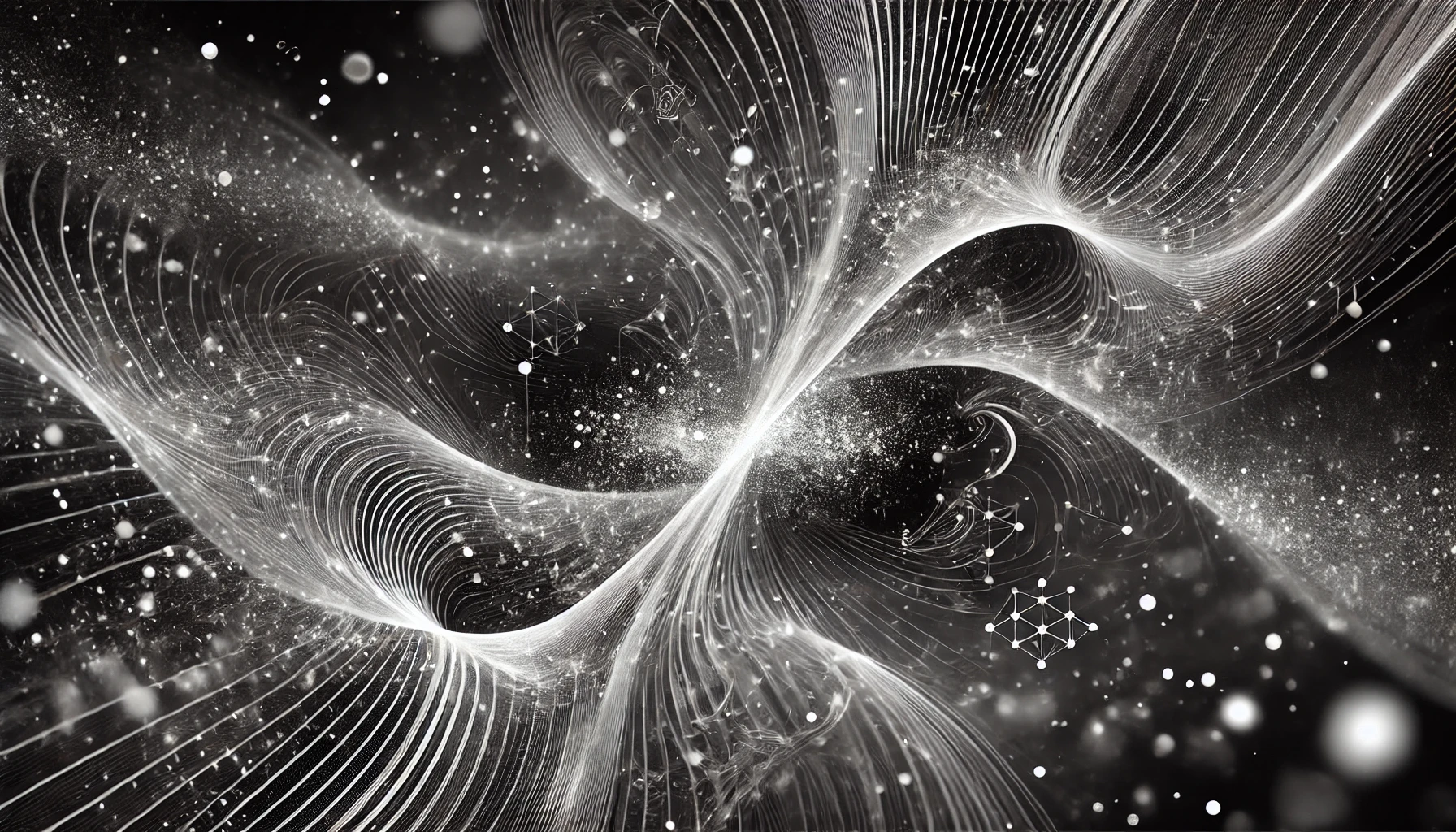Table of Contents
Quantum waves, often referred to as wave functions, are a fundamental concept in quantum mechanics, representing the probability distribution of particles in the quantum realm. Unlike classical particles that have a definite position and momentum, quantum particles are described by wave functions that embody the probability of finding the particle in a particular state.
This blog introduces the concept of quantum waves, explores their significance in quantum mechanics, and examines recent research and potential applications, including any connections to consciousness and advanced experiments conducted by various agencies.
The Nature and the concept of Quantum Waves
At the heart of quantum mechanics lies the wave function, a mathematical representation of a quantum system. Unlike classical waves, such as sound or water waves, quantum waves are not physical oscillations in space but rather abstract mathematical functions that describe the probability of finding a particle in a specific state. The wave function is typically denoted by the Greek letter Ψ (Psi) and contains all the information about a quantum system’s possible states.
The famous Schrödinger equation, formulated by Austrian physicist Erwin Schrödinger in 1925, describes how the wave function evolves over time. This equation is central to quantum mechanics and provides a way to predict the behavior of quantum systems. The wave function itself does not tell us the exact position or momentum of a particle; instead, it gives us a probability distribution. When we square the amplitude of the wave function (Ψ²), we obtain the probability density, which tells us where the particle is likely to be found.
This probabilistic nature of quantum waves marks a significant departure from classical physics, where particles have definite trajectories. In the quantum world, particles like electrons and photons can exhibit both particle-like and wave-like behavior, a phenomenon known as wave-particle duality.
This duality is best exemplified by the double-slit experiment, where particles passing through two slits create an interference pattern characteristic of waves, even when fired one at a time.
Quantum Waves vs. Classical Waves
To understand quantum waves better, it is essential to compare them with classical waves, which are familiar from everyday life. Classical waves, such as sound waves, water waves, and electromagnetic waves, involve the transfer of energy through a medium. These waves have properties like wavelength, frequency, amplitude, and speed, and they obey the principles of superposition and interference.
Quantum waves, on the other hand, are not waves in the traditional sense. They do not represent physical oscillations but rather a set of probabilities. The wave function Ψ describes a system’s state in terms of the possible positions, momenta, and other physical properties of particles. When we talk about the wavelength of a quantum wave, we refer to the de Broglie wavelength, which relates a particle’s momentum to its wave-like nature.
Another key difference is that classical waves are deterministic, meaning their behavior can be predicted precisely if the initial conditions are known. Quantum waves, however, are inherently probabilistic. The outcome of a quantum event can only be predicted in terms of probabilities, not certainties. This probabilistic nature is one of the defining features of quantum mechanics and is encapsulated in Heisenberg’s uncertainty principle, which states that certain pairs of properties, like position and momentum, cannot both be known to arbitrary precision simultaneously.
This distinction between quantum and classical waves has profound implications for our understanding of reality. In the classical world, objects exist in well-defined states, but in the quantum realm, the wave function represents a superposition of all possible states until a measurement is made. This superposition is what allows quantum particles to exhibit behavior that seems strange or counterintuitive from a classical perspective.
Recent Research and Applications of Quantum Waves
The study of quantum waves continues to be a vibrant area of research, with significant implications for technology, fundamental physics, and even consciousness studies. Recent advances in quantum computing, quantum cryptography, and quantum teleportation all rely on a deep understanding of quantum waves and their behavior.
1. Quantum Computing and Quantum Waves
Quantum computing represents one of the most exciting applications of quantum waves. In a quantum computer, information is processed using qubits, which can exist in a superposition of states thanks to the principles of quantum mechanics. This allows quantum computers to perform certain calculations much faster than classical computers by leveraging the parallelism inherent in quantum superposition. The manipulation and control of quantum wave functions are critical to the operation of quantum computers, and ongoing research is focused on improving the stability and coherence of qubits.
For example, Google’s quantum processor Sycamore demonstrated “quantum supremacy” in 2019, performing a calculation that would take a classical supercomputer thousands of years to complete. This achievement underscored the potential of quantum computing to revolutionize fields such as cryptography, material science, and artificial intelligence.
2. Quantum Cryptography
Quantum cryptography, specifically quantum key distribution (QKD), uses the principles of quantum waves to ensure secure communication. In QKD, information is encoded in quantum states, and any attempt to eavesdrop on the communication causes a disturbance in the quantum states, which can be detected by the communicating parties. This ensures that the encryption keys are secure and cannot be intercepted without detection. The reliance on quantum waves for secure communication is already being implemented in real-world applications, with companies and governments exploring its use for protecting sensitive data.
3. Quantum Consciousness and Experimental Research
While still speculative, the idea that quantum waves might play a role in consciousness has gained attention in recent years. Some theories, like the Orch-OR (Orchestrated Objective Reduction) theory proposed by Stuart Hameroff and Roger Penrose, suggest that consciousness might arise from quantum processes within the brain, specifically within microtubules. These microtubules are thought to exhibit quantum coherence, allowing for the possibility that quantum wave functions might influence cognitive processes.
While this idea remains controversial and lacks conclusive evidence, it has inspired a range of experimental research. For instance, the CIA’s interest in consciousness and its potential connections to quantum phenomena, although not directly related to quantum waves, reflects a broader curiosity about the intersection of quantum mechanics and the mind. The declassified Stargate Project, for instance, explored various forms of consciousness phenomena, such as remote viewing, which some theorists have loosely connected to quantum processes, though these connections are highly speculative and debated.
In addition, recent studies in quantum biology suggest that quantum coherence might play a role in certain biological processes, such as photosynthesis and avian navigation. If quantum coherence can be demonstrated in biological systems, it might lend some support to the idea that similar processes could occur in the brain, potentially linking quantum waves to consciousness.
Implications for Technology and Understanding Reality
The implications of quantum waves extend far beyond theoretical physics; they are already shaping the future of technology and our understanding of reality. Quantum computing, quantum cryptography, and quantum teleportation are just the beginning of what could be a new era of technology based on the principles of quantum mechanics.
Moreover, the study of quantum waves continues to challenge our fundamental assumptions about the nature of reality. The wave-particle duality, the probabilistic nature of quantum mechanics, and the concept of superposition all suggest that reality at the quantum level is far more complex and interconnected than it appears at the macroscopic level.
As we continue to explore these ideas, it is essential to approach them with both scientific rigor and an open mind. The study of quantum waves not only advances our understanding of the quantum world but also raises profound philosophical questions about the nature of existence, consciousness, and the universe itself.
Recent research continues to uncover new insights into the behavior of quantum waves, with potential applications that could reshape our world. While the implications for consciousness remain speculative, the study of quantum waves remains a vibrant and essential area of inquiry, challenging our understanding of reality and pushing the boundaries of science.
FAQ
1. What are quantum waves?
Quantum waves, or wave functions, are mathematical representations of the probability distribution of particles in quantum mechanics, describing the likelihood of finding a particle in a particular state.
2. How do quantum waves differ from classical waves?
Unlike classical waves, which involve physical oscillations in a medium, quantum waves represent probabilities and do not correspond to physical waves. They describe the possible states of quantum particles.
3. What is the Schrödinger equation?
The Schrödinger equation is a fundamental equation in quantum mechanics that describes how the wave function of a quantum system evolves over time.
4. What is wave-particle duality?
Wave-particle duality is the concept that quantum particles, such as electrons and photons, can exhibit both wave-like and particle-like behavior, depending on how they are observed.
5. What is superposition in quantum mechanics?
Superposition is the principle that a quantum system can exist in multiple states simultaneously until it is observed or measured, at which point it collapses into one state.
6. How are quantum waves used in quantum computing?
In quantum computing, qubits can exist in a superposition of states, allowing quantum computers to process information in parallel and perform certain calculations much faster than classical computers.
7. What is quantum cryptography?
Quantum cryptography uses the principles of quantum mechanics, particularly quantum waves, to ensure secure communication by making it impossible to eavesdrop without detection.
8. Is there a connection between quantum waves and consciousness?
Some speculative theories, such as the Orch-OR theory, suggest that consciousness might arise from quantum processes in the brain, potentially involving quantum waves, though this idea remains controversial.
9. What is the CIA’s Stargate Project?
The Stargate Project was a CIA program that investigated psychic phenomena, such as remote viewing. While not directly related to quantum waves, it reflects a broader interest in the potential connections between consciousness and quantum mechanics.
10. How does quantum biology relate to quantum waves?
Quantum biology explores the role of quantum coherence and other quantum effects in biological processes, suggesting that similar processes might occur in the brain, potentially linking quantum waves to consciousness.
11. What are qubits in quantum computing?
Qubits are the basic units of quantum information in a quantum computer, capable of existing in a superposition of states, allowing quantum computers to process multiple possibilities simultaneously.
12. What is the de Broglie wavelength?
The de Broglie wavelength is the wavelength associated with a particle, relating its momentum to its wave-like nature, and is a key concept in understanding quantum waves.
13. How do quantum waves influence our understanding of reality?
Quantum waves challenge classical notions of reality by introducing probabilistic behavior and the concept of superposition, suggesting that reality at the quantum level is far more complex than at the macroscopic level.
14. Can quantum waves be observed directly?
Quantum waves themselves cannot be observed directly; they are mathematical constructs. However, their effects, such as interference patterns, can be observed in experiments like the double-slit experiment.
15. What are the implications of quantum waves for technology?
Quantum waves are crucial for the development of quantum technologies, including quantum computing, cryptography, and potentially even quantum communication and teleportation.
Bibliography
- Schrödinger, Erwin. “An Undulatory Theory of the Mechanics of Atoms and Molecules.” Physical Review 28.6 (1926): 1049-1070.
- Hameroff, Stuart, and Roger Penrose. “Consciousness in the Universe: A Review of the ‘Orch OR’ Theory.” Physics of Life Reviews 11.1 (2014): 39-78.
- Google AI Quantum. “Quantum Supremacy Using a Programmable Superconducting Processor.” Nature 574 (2019): 505-510.
- U.S. Central Intelligence Agency. “Stargate Collection.” CIA.gov.
- Deutsch, David. The Beginning of Infinity: Explanations That Transform the World. Penguin Books, 2011.


Leave a Reply